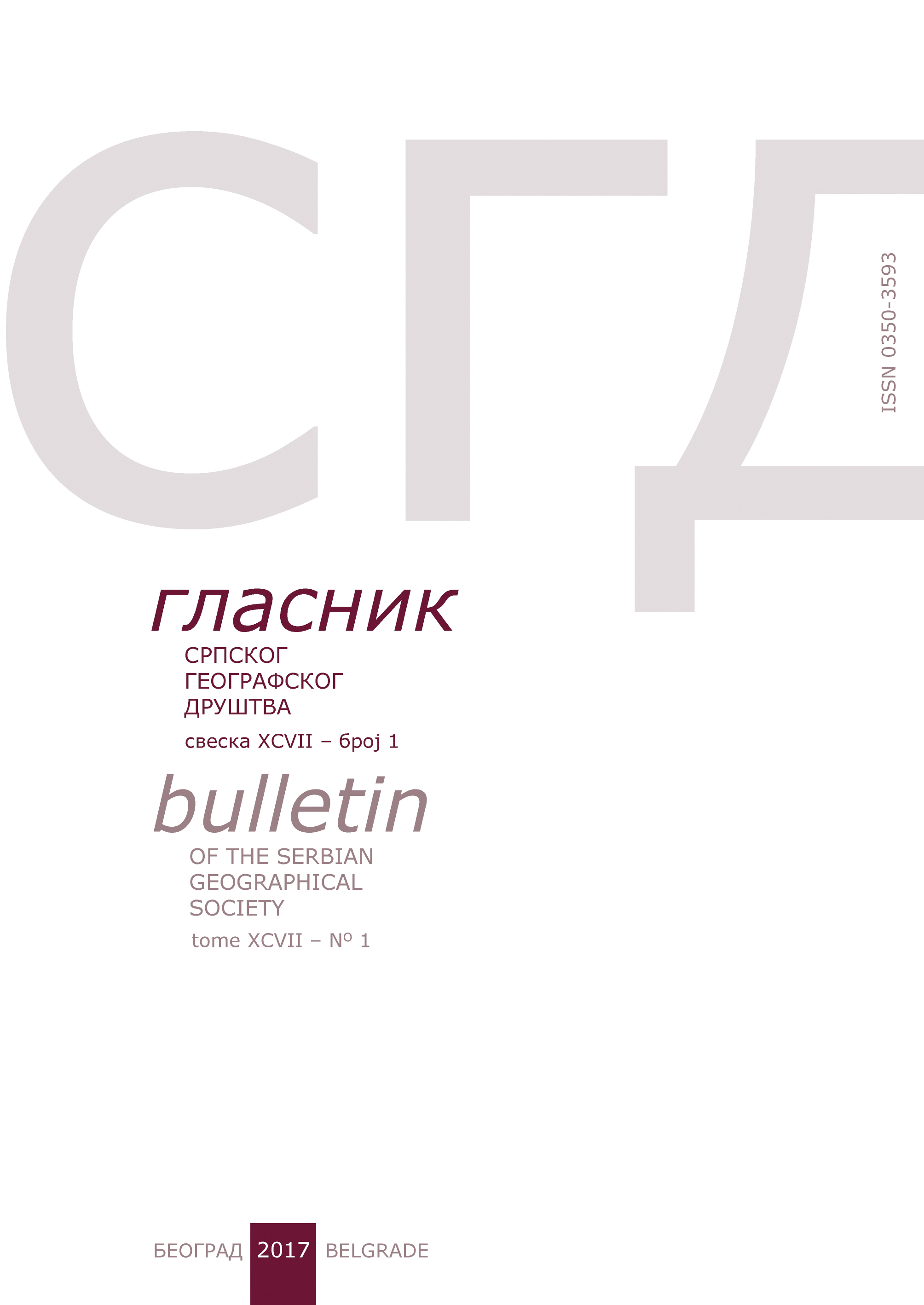Tрендови мразних дана у Босни и Херцеговини
Trends in Frost Days in Bosnia and Herzegovina
Author(s): Tatjana Popov, Slobodan Gnjato, Goran TrbićSubject(s): Physical Geopgraphy
Published by: Српско географско друштво
Keywords: frost days; trend; climate change; plant phenology; Bosnia and Herzegovina
Summary/Abstract: The paper analyzes the recent trends in the occurrence of frost days in Bosnia and Herzegovina. Trends during the 1961-2015 periods were determined based on data from fourteen meteorological stations. MAKESENS procedure, which uses the nonparametric Mann-Kendall test and the nonparametric Sen’s method, was applied on time series of annual number of frost days to assess trends magnitude and its statistical significance. Given the results, negative and largely significant trends are present all over Bosnia and Herzegovina territory. The estimated decreasing trend was in the range of 2.1-6.4 days per decade. The percentile analysis of the annual number of frost days in Bosnia and Herzegovina suggests that a decreasing trend has become more pronounced since 1990s and particularly since the beginning of the 21st century. The observed downward trends were primarily a consequence of high negative trends in the coldest winter months - in January and December. The most prominent decrease in annual number of frost days was observed in Banja Luka, Bugojno, Zenica and Bjelašnica area. Further research on the effects of the determined trends in the frost occurrence on plants is necessary particularly due to the observed changes in plant phenology as a result of climate system warming.
Journal: Гласник Српског географског друштва
- Issue Year: 97/2017
- Issue No: 1
- Page Range: 35-55
- Page Count: 21
- Language: English, Serbian

